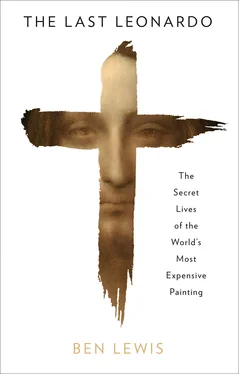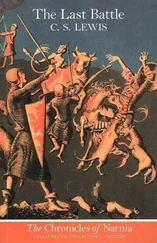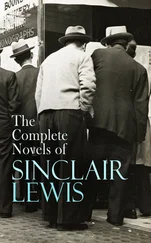1 ...8 9 10 12 13 14 ...18 Despite his isolation, Kemp stuck to his guns, and became, like many connoisseurs in such a position, increasingly vociferous in his opinion and increasingly defensive towards his critics. Such is the way of these things that Kemp ended up working with a collaborator who soon became controversial. He invited a Canadian forensic art expert called Peter Paul Biro to look at the picture. Biro had made a name for himself authenticating works of art by discovering the hidden fingerprints of artists on them, deploying a multi-spectral-imaging camera with impressive powers of magnification which he had designed himself. He claimed to have authenticated pictures by Turner, Picasso and Jackson Pollock with his fingerprint cameras. Kemp invited Biro to examine the Bella Principessa and Biro found a fingerprint on the picture which, he said, was ‘highly comparable’ to another on Leonardo’s St Jerome . But in 2010 an article in the New Yorker by David Grann alleged that Biro had found Pollock’s fingerprints on paintings supposedly by Pollock but which, experts said, contained acrylic paint that had not been previously documented in his drip paintings.10
Kemp blamed the failure of La Bella Principessa on its over-hasty exposure to the media by Silverman. ‘I call it premature ejaculation,’ he told The Art Newspaper . ‘There were things that came out before they were thought through. I would have much preferred to produce all the evidence when we had it, in one go.’11 Kemp said he had learned from the Bella Principessa debacle: ‘Above all, the public debut of a major item should be accompanied or preceded by the full historical and technical evidence being made available in the way scholars regard as proper.’12
And yet, when Robert Simon invited Martin Kemp to see the Salvator Mundi , the Oxford art historian seemingly forgot all his own advice.
*The Polish art historian Katarzyna KrzyŻagórska-Pisarek wrote an analysis of the drawing: ‘There is no real evidence that La Bella Principessa shows Bianca Giovanna Sforza, or that the vellum leaf comes from the Warsaw Sforziad … The vellum of the Warsaw Sforziad is of different quality/texture (white and smooth) than the support of La Bella Principessa (yellow and rough, with follicles) and its size is different too (by 0.8 cm). The drawing was also made on the inferior, hairside of the vellum, unlike Birago’s illuminations [contained in the Warsaw volume] … the “archaic”, formal and highly finished style of La Bella Principessa combined with the complex mixed media technique are unusual for Leonardo, and there is no evidence that he ever drew a full female profile (face and body), especially in coloured chalks on vellum …’
Mystery is the defining quality of Leonardo’s art. A seductive glance is thrown, we know not to whom. The Virgin and child take shelter with saints and angels in a twilight grotto, which has no address in the Bible. A smile, whose cause can only be imagined, begins to cross a woman’s face, if indeed it is a woman’s face, if indeed it is a smile. Around these strange incidents and encounters hover a few ambiguous facts open to a multitude of interpretations. Our understanding of Leonardo’s life and work rarely becomes more than a pool of theories, surrounded by a tangle of conjecture, suspended from a geometry of clues. Amidst this network of possibilities, the Salvator presents the most fundamental mystery of them all. In some respects, it appears to be the most compressed embodiment of the essence of Leonardo’s art; in other ways it is a stark anomaly. While other of Leonardo’s paintings ask questions like, Am I smiling? or What am I feeling? or even Who is winning? , the Salvator asks Am I a Leonardo?
Leonardo’s paintings have left a trail of documents behind them – contracts for commissions, legal filings from irate clients, eyewitness statements from admirers, oral histories recorded by the children of men who knew him, and even notes in the margins of books on completely different subjects. Such documents are a mine of information.
There are legal agreements for many of Leonardo’s commissions, each of which contains its own set of illuminating details about Leonardo’s profession and character. The one for his first major work, the Adoration of the Magi , offered him a piece of land as payment, which he couldn’t sell for three years, while he had to pay for all the paints and gold leaf himself. He was soon behind schedule, and the monks wrote to him telling him to hurry up. Within a year they had given up, writing off the small sum they had already advanced Leonardo so he could buy wheat and wine. Leonardo was a genius, but also temperamental and, by turns, a self-critical perfectionist: he worked slowly and left many works unfinished, much to the exasperation of his clients. A trail of lawsuits followed him wherever he went.
In 1500 another set of angry monks, this time Milanese, from the Confraternity of Immaculate Conception, refused to pay for the Virgin of the Rocks , now in the National Gallery in London, saying it hadn’t been finished. Leonardo countersued, arguing that the previously agreed fee was too low for the quality of work he was providing. The dispute lasted years. In 1506 a judge ruled in favour of the monks, arguing that there was not enough of Leonardo’s hand in the picture, and that he had to return to Florence and finish it. He went back reluctantly, but it is not known what additional work he carried out on the painting.
Another important client, the Council of Florence, was disappointed the same year, when the artist left for Milan leaving behind him the unfinished Battle of Anghiari , now lost. Leonardo had ‘taken a goodly sum of money and provided a small beginning of a great work, which he should have made’, complained the Gonfaloniere , one of the city’s leaders.
Where there are no surviving contracts, we often read of Leonardo’s paintings in the letters and memoirs of awestruck fans, who recorded for posterity the moment they met the great artist. Secretaries and agents of cardinals and countesses left entries in their diaries marvelling at the paintings and notebooks they had seen when they visited his studio, such as Antonio de Beatis who saw the St John , the Mona Lisa and the Virgin and Child with St Anne in Leonardo’s studio in 1517. Leonardo’s unusual working practices were often a talking point. The Italian author Matteo Bandello recorded watching him working on The Last Supper in 1497:
He would arrive early, climb up on to the scaffolding, and set to work. Sometimes he stayed there from dawn to sunset, never once laying down his brush, forgetting to eat and drink, painting without pause. At other times he would go for two, three or four days without touching his brush, but spending several hours a day in front of the work, his arms folded, examining and criticising the figures to himself. I also saw him, driven by some sudden urge, at midday, when the sun was at its height, leaving the Corte Vecchia, where he was working on his marvellous clay horse, to come straight to Santa Maria delle Grazie, without seeking shade, and clamber up on to the scaffolding, pick up a brush, put in one or two strokes, and then go away again.
Proof of Leonardo’s authorship of paintings can come from the most obscure and unpredictable sources. The identity of the Mona Lisa and the date when Leonardo started painting it were both subject to dispute until 2005, when a German scholar came across a note in the margin of a Renaissance volume of letters by the Roman orator Cicero. The marginalia came from Agostino Vespucci, a Florentine civil servant who worked for Machiavelli. A line from Cicero, about how the fabled Roman painter Apelles left parts of his paintings unfinished, reminded Vespucci of Leonardo. Cicero commented, ‘Apelles perfected the head and bust of his Venus with the most elaborate art, but left the rest of her body roughly rendered …’ Vespucci jotted next to the text:
Читать дальше












